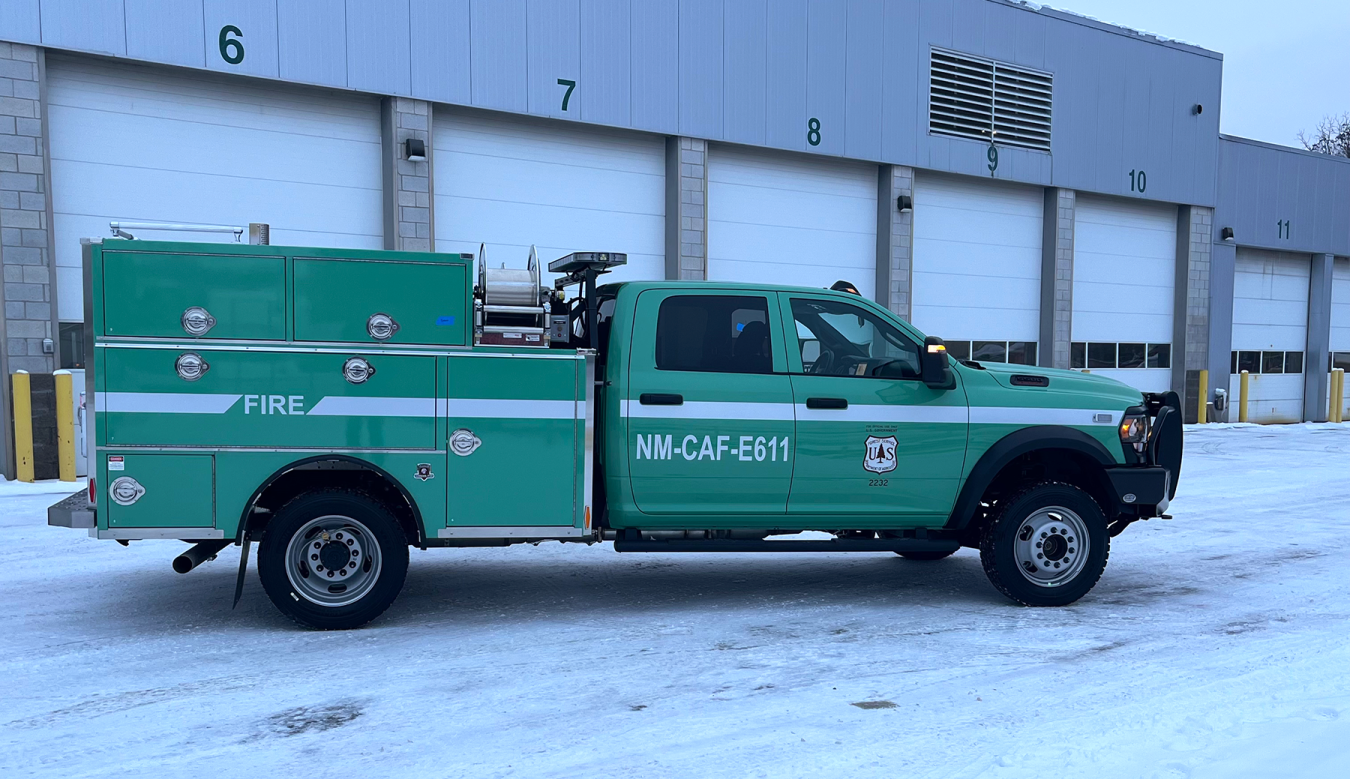The U.S. Department of Agriculture (USDA) Forest Service continues to improve its fleet management capabilities through strategic enhancements to its Fleet Management Information System (FMIS). These enhancements have helped improve operational efficiency, support more informed investment decisions, and simplify annual reporting to the Federal Automotive Statistical Tool (FAST).
One of the most impactful features is the Forest Service’s RScore, a vehicle-level metric that adds a transparent, data-driven method to guide agency-owned vehicle replacement planning. The RScore goes beyond the traditional replacement criteria of age, mileage, and vehicle type. The metric enables the Forest Service to identify high-risk, high-cost vehicles that should be considered for early replacement, including those with excessive maintenance costs, service times, and utilization rates.
A U.S. Forest Service fleet vehicle. Photo courtesy of the U.S. Department of Agriculture
What Is the RScore?
The RScore is a numeric value generated for each vehicle based on three factors:
- Maintenance Cost Points: Tracks cumulative maintenance expenses relative to the vehicle’s original cost (If Capital Value = 0 then 0 points):
- Age Points: Measures the vehicle’s time in service relative to its expected lifespan:
- Meter Points: Assesses actual versus expected use (If no minimum utilization is defined, meter points equal age points):
These three scores are summed to calculate the vehicle’s RScore. A total score of 15 or higher indicates the vehicle warrants evaluation for early replacement.
Driving Better Fleet Decisions
A vehicle with an RScore of 15 or higher signals a strong early-replacement candidate. The RScore also provides a critical tool for regional fleet managers to quickly assess maintenance expenditures. When reviewing a repair request (especially for expensive repairs), fleet managers can use the RScore to help streamline the decision to approve repairs or replace the vehicle.
By embedding the RScore into its FMIS and integrating it with approval workflows, the Forest Service is equipping regional and local fleet management with actionable insights while also leveraging critical local knowledge. This data-driven approach to vehicle replacement planning is reducing maintenance and replacement costs, boosting accountability, and modernizing how the fleet manages its vehicle inventory.


